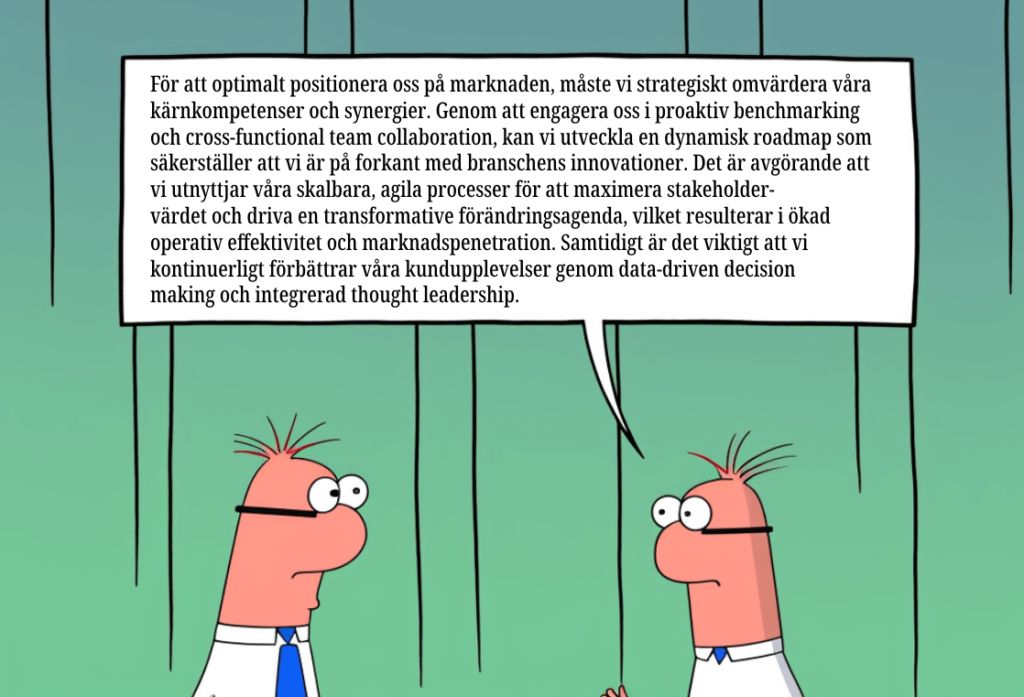Inefficiency in companies measured by Dilbert score
In a world where corporate culture plays a crucial role in both employee well-being and organizational success, the 'Dilbert Score' has emerged as a unique tool to measure and understand the level of bureaucracy and inefficiency within companies. The popular comic strip Dilbert is created by Scott Adams. The Dilbert score relates to how corporate processes and structures impact daily operations.
I haven't been able to find a method to measure the Dilbert score, but Scott Adams coined the Dilbert Principle, which is about the most inefficient workers being moved to areas where they can do the least harm, i.e., management. Read an article about the principle
"Every skill you acquire doubles your odds of success. Adams says you can raise your market value by being “merely good—not extraordinary—at more than one skill.”
Scott Adams interview Forbes
Vad is Dilbert score?
The Dilbert Score is an informal method for assessing an organization's bureaucracy and inefficiency. It is based on the assumption that high levels of unnecessary rules, cumbersome processes, and inefficient workflows hinder productivity and creativity. A high Dilbert Score indicates that a company has many of these negative characteristics, while a low score suggests a more efficient and less bureaucratic environment.
How is Dilbert score measured?
The Dilbert Score is not an exact scientific measurement but rather a subjective assessment. It can be based on employee perceptions, company policies, and how decisions are made within the organization. Common indicators of a high Dilbert Score include excessive reporting, extensive approval processes, and a culture where formal rules take precedence over practical solutions.
Why is the Dilbert score important?
Talking about the Dilbert Score can help business leaders put into words how they can improve their organization's efficiency and work culture. By identifying areas where bureaucracy and inefficiency exist, leaders can take steps to simplify processes, encourage creative problem-solving, and thus increase both employee satisfaction and the overall performance of the company.




